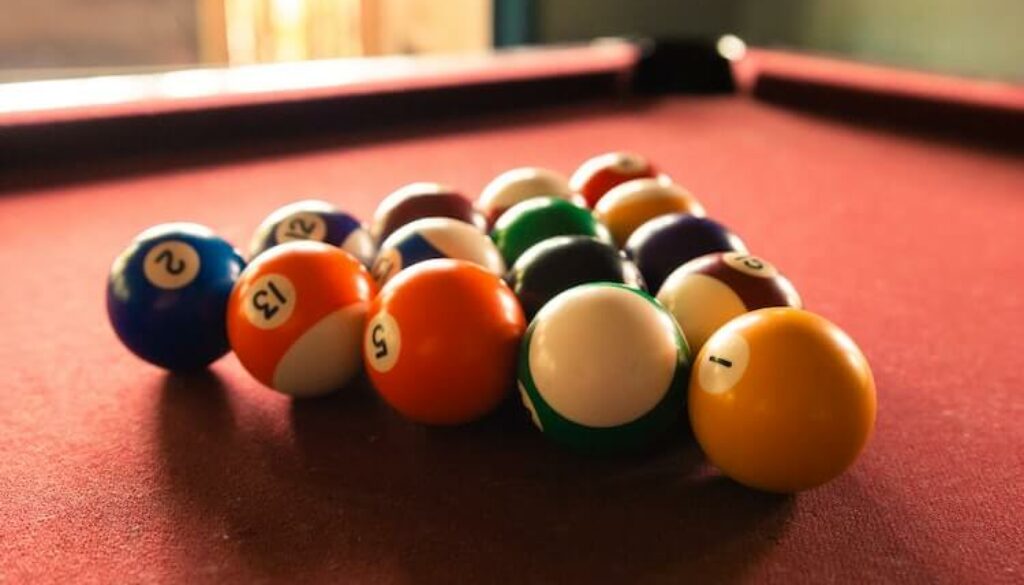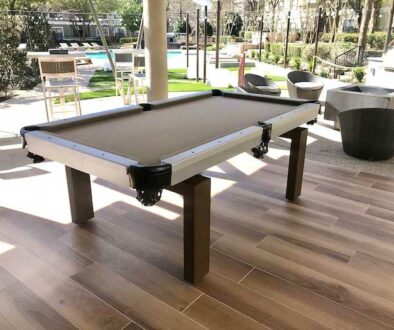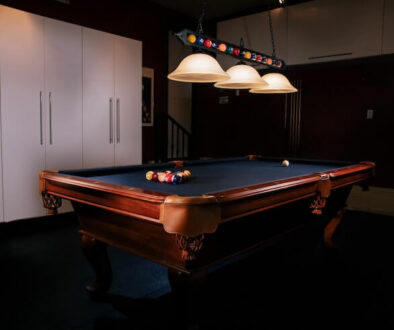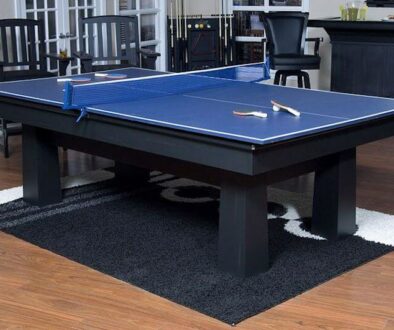Are Slate Pool Tables Better Than MDF?
Shopping for a new pool table can be hectic even for experienced pool players. There are just so many options in the market nowadays. One of the first and most important decisions you have to make is choosing from a slate or MDF bed table.
The two pool table materials are the main options for any pool enthusiast looking for a high-quality table. Each material has its pros and cons, but slate tables are far better quality, and we will explain why in this article.
We’ll explain what MDF and slate tables are, the advantages of each, and the key elements that set the two apart – such as durability, quality, and cost. Let’s jump straight in!
Slate vs. MDF Pool Tables
There are a few differences between slate and MDF pool table beds, from material to assembly. These differences result in finished tables that vary greatly in quality depending on which of the two materials is used. We will look at the main differences shortly.
But first, let’s start by defining slate and MDF, and highlighting the key advantages of each.
What Is Slate?
Slate is a natural rock mined from a slate mine. After extraction from the ground, the slate slab is cut and shaped. The stone is then honed to create a flat and smooth surface before being installed in a cabinet to form the pool table’s playing surface.
So, why do pool tables use slate?
Pool table manufacturers use slate because it is a highly durable and heavy duty material that can ensure a billiards table lasts a lifetime. A slate slab also creates a flat surface that allows balls to roll smoothly across the table.
Most slate slabs used to make pool tables today are mined in China, Italy, and Brazil. As expected, pool tables made from these natural stones are not only more durable but also quite heavy.
Advantages of Slate Pool Tables
- Creates a high-performing playing surface
- Very durable
- Does not react to the environment (moisture or hot/cold weather)
- Excellent resale value
- Resilient surface that is resistant to damage
What Is MDF?
MDF is short for medium-density fiberboard. MDF is one of the most commonly used wood composites for making products worldwide.
The MDF pool table bed material is made from wood chips bound together by either wax or resin. The wood chips are then compressed under high pressure to remove any air pockets between them and create a flat and sturdier surface.
MDF makes an excellent pool table bed material as it is denser than most other wood composite materials. Also, the molding process used to make MDF makes it possible to create a perfectly flat playing surface that allows pool balls to roll smoothly.
Although MDF makes an excellent playing surface, the quality doesn’t quite match what you get from a slate slab.
Advantages of MDF Pool Tables
- Cost-effective
- Lightweight
- Highly portable
- Easier assembly
Durability, Longevity and Weight
Durability is the main factor that sets slate and MDF pool tables apart. Slate pool tables are as tough as they can get and are made to last a lifetime.
Besides the almost indestructible slate slab, they also often have a hardwood frame. This further improves the quality of the slate bed pool table and makes it more long-lasting. You may never need to replace your slate pool table in your lifetime. The average lifespan of slate pool tables is around 20 to 25 years.
MDF pool tables are designed to be more cost-effective. They also use cheaper wood or metal frames, reducing the overall quality. These tables can still serve you well for many years. But, even the best MDF bed pool table might only last 5 to 10 years.
The choice of material and overall construction also leads to a difference in weight. The more solid slate bed pool tables are much heavier than MDF tables. Even a smaller 6-foot slate pool table still weighs around 500 pounds, while a tournament-size 9-foot table will weigh over 1,000 pounds.
It is important to note that the weight of a slate pool table varies a lot as you can get them in 1 or 3-piece models. We will go into more detail on this later.
MDF bed pool tables are much lighter than slate, and most models are easy to pick up and move around. The actual weight still depends on the size and model, but most fall between 175 and 225 pounds.
Who Should Buy a Slate or MDF Pool Table?
The more solid and durable slate bed pool table will work best for professionals and pool players that play competitively in tournaments or plan to start. Slate tables provide a high-performance and consistent playing surface that is very useful if you want to improve your skills.
MDF tables are great for casual players who are not too serious about the sport and just want to have fun. They allow you to own a pool table for leisure without spending much money.
Assembly
Both pool table types require some assembly as they typically come in sections. A slate bed pool table will take more work and involve more steps than an MDF table. MDF pool tables come mostly assembled. This makes them much easier and faster to set up out of the box. Most MDF tables are at least half assembled, and you only need to attach the legs to start playing.
The process is completely different when it comes to slate tables. Most experts recommend that you pay a professional to assemble a slate pool table for you. A professional will ensure the table is perfectly leveled for a more precise playing surface.
The weight of a slate table can also make the assembly more difficult. Even if it is a 3-piece slate table, each piece can be over 250 pounds. You’ll likely need additional help or have to use machinery to hoist the pieces of place.
1-Piece Slate vs. 3-Piece Slate Pool Tables
3-piece slate pool tables will still be generally easier to set up than a 1-piece table. It is easier to move the individual slate slabs separately while building the table.
A 3-piece table allows for more precise leveling. You can level each slate slab separately from the other and make micro-adjustments until you get a highly precise playing surface. Lastly, a 3-piece slate table is more aesthetically appealing and highly customizable.
That said, 1-piece slate pool tables also have their advantages. For instance, 1-piece slate tables can withstand more abuse, making them perfect for commercial use. Also, they are easier to move around because you won’t spend as much time reassembling and re-leveling the table.
Slate or MDF – Which is Better?
Slate bed pool tables are the better option for any serious pool player who wants to sharpen their skills. Slate tables are of the highest quality, and the playing surface and cabinet are built to last a very long time. Also, they do not react or warp in response to changes in the environment.
Slate tables create a true and highly consistent playing surface. Pool balls will move across the surface faster and more smoothly. MDF pool tables can cause more drag, which affects playability.
It is important to note that a slate pool table’s benefits come at an extra cost. Slate tables are more expensive than the MDF ones. At the same time, they should still give you great value for the money as they will last much longer.
Slate and MDF Pool Table Comparison
| Slate Tables | MDF Tables |
| Fast and smooth | Slight drag |
| Lasts 20-25+ years | Lasts 5 to 10 years |
| Will not warp | May warp |
| 500-1000+ pounds | 175 to 225 pounds |
| Heavy and cumbersome | Light, easy to assemble |
| Starts around $1000 | Averages around $500 |
Wrap Up
Choosing a pool table can be confusing with the many choices out there, but the choice is always a lot easier if you know what pool table material will work best for you.
After reading this article, it should now be clear that slate bed pool tables are the superior option. They are better quality, durable and have excellent playing characteristics since they create a smooth and consistent playing surface.
MDF tables can still work for casual players looking for something to use when playing for fun with friends without spending much money.
Good luck in your pool table search, and as always, Happy Shooting!




